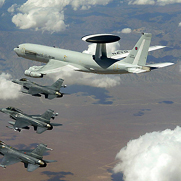
NTI’s Lynn Rusten on Defense Department’s New Strategy for Countering Weapons of Mass Destruction
The DoD’s new CWMD strategy, last updated in 2014, comes at a time when longstanding norms against nuclear use are being tested.
About the image
On May 20th heads of state will gather in Chicago for the 2012 NATO Summit. They are expected to discuss the results of the Deterrence and Defense Posture Review (DDPR) ordered at NATO's 2010 Lisbon summit. The DDPR is meant to articulate how NATO can contribute to nuclear disarmament efforts while also providing sufficient military forces to uphold the alliance's mutual security guarantee in the eyes of both members and potential aggressors.
However, little progress is likely to be realized, with critical decisions on NATO's deterrence and defense posture expected to be delayed for at least an additional year or two. The authors note: "The DDPR must consider the reality of the U.S. conventional drawdown and alliance-wide fiscal restrictions if it is to provide feasible recommendations about the future of NATO's conventional and nuclear forces."
Read the full issue brief by Miles Pomper, Nikolai Sokov and Meghan Warren of the Monterey Institute of International Studies
Sign up for our newsletter to get the latest on nuclear and biological threats.
The DoD’s new CWMD strategy, last updated in 2014, comes at a time when longstanding norms against nuclear use are being tested.
The paper highlights the need for renewed attention to the catastrophic effects of nuclear conflict as a crucial step toward reducing the risk of nuclear use.
A new report from NTI highlights the critical need for a global diplomatic approach to address growing cyber risks, including, where possible, through cooperation between the United States and Russia.


